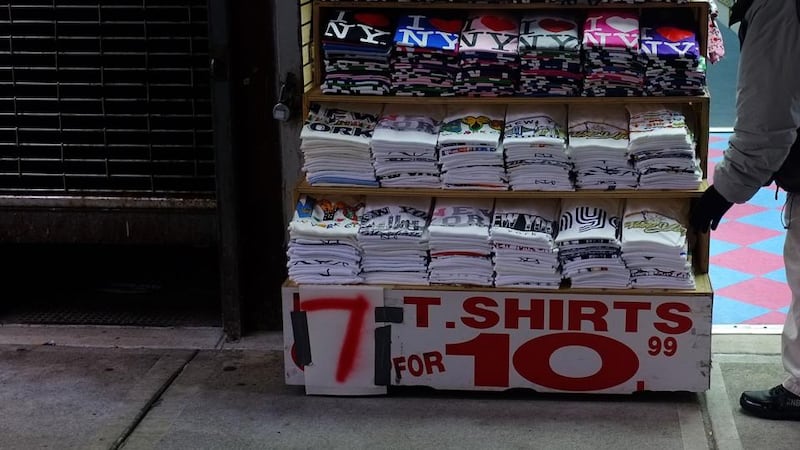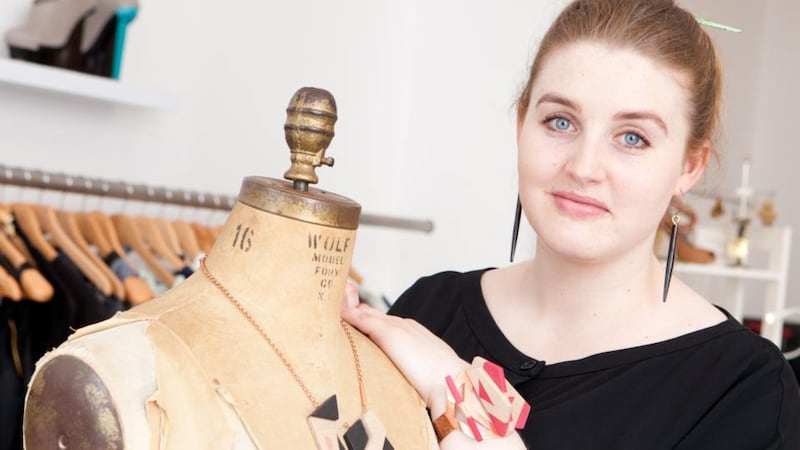Slow food is now an accepted part of the foodie lexicon but “slow fashion” has yet to catch on to the same extent. Perhaps the concept of “fast fashion” is easier to recognise, this ubiquitous, and, in some cases, frightening indictment of an industry that thrives on cheap labour and high levels of needless consumption.
If fast fashion refers to cheap clothes, and lots of them – bought frequently, and with as little thought as you'd give to buying a magazine – then slow fashion must mean expensive clothing, and less of it. Think of the woman who buys a Prada coat in September, a pair of Tod's loafers in March, a pair of J Brand jeans in August, all of which she will mix and match with items she already owns: the perfect white shirt, the cashmere sweater, the little black dress.
This perfect woman with the capsule wardrobe is a fantasy. In reality, slow fashion is related more to careful, conscious consumption.


For the consumer, thoughtful shopping often manifests in selfish concerns. First and foremost: how long will this item last me? Do I need it? Is it well-made? Will it retain its shape after washing?
Really, the slow-fashion aficionado should be asking tougher questions. The human impact of our consumption becomes clear when we wonder who is at the bottom of this food chain. Who made this €7 T-shirt? Are they receiving a living wage – the minimum wage necessary to meet their basic needs?
Then there is the environmental impact. What is this garment made of? Where was the fabric made, or farmed? How many litres of water were wasted in its creation? And, of course, where will it end up? Clothing that is not recycled or re-owned ends up in landfill, where man-made fabrics such as vinyl and polyester will never biodegrade.
Expenditure on clothes
The evolution of our shopping habits, born of very specific economic and cultural changes, has brought about the need for a slow-fashion movement. In the US after the first World War, according to the author Elizabeth L Cline in her book Overdressed: The Shockingly High Cost of Fast Fashion, annual expenditures on clothes were close to 17 per cent of annual income.
Today, statistics from the US Bureau of Economic Analysis tell us that individual spending on clothing in the US is less than $1,100 (€809) a year. On a salary of $30,000 (€22,000), that’s less than 4 per cent of income – yet in the developed world we own more items of clothing than ever before. Many of us want to own different clothes for (almost) every day of the year, yet many of us are unwilling to spend much more than €15 on a T-shirt.
A recent conversation with a friend involved her turning down my suggestion of buying a €69.99 silk T-shirt from Danish brand Selected Femme. "Why would I spend €70 on a T-shirt?" she asked. I pointed out the quality of the top, which was silk, in a vivid animal print, and French-seamed. "I don't care," she said. "It doesn't look more expensive than a €10 T-shirt I'd buy in Penneys. "
The Sirona spirit
"It's hard to explain to people how much something actually costs," says Lesley Dunne, owner of Sirona in Galway, an ethical fashion boutique that sells designs from ethical labels as well as from many Irish designers.
“From start to finish, it’s usually about €40 for a T-shirt – the cotton is grown, which is very expensive to produce, uses a lot of water, then it’s spun, woven into fabric, then sewn. There are a lot of steps that most people aren’t aware of. A lot of time goes into any piece of clothing.”
At a debate organised by Comhlámh, the Irish Association of Development Workers, late last year, it was suggested that ethical fashion has gone, well, out of fashion, although there was a period, in the mid-1990s, when fair-trade clothing – items that were made of cotton or silk purchased at a fair price – was very trendy. Penneys did a fair-trade cotton label, as did H&M. But people’s interest soon waned, and the fair-trade labels disappeared (although H&M has continued to make an “eco” collection called Conscious in a limited run each season).
“I think interest is growing slightly,” says Dunne. “I get a lot of people looking for ethical fashion but – and here’s the clincher – their spend would be a lot lower [than my other customers]: about €50.”
Dunne says her more regular customers – the ones with the higher spends – are buying into the “slow fashion” movement, but not necessarily for ethical reasons.
“They have started to realise they want clothes to last longer than a year. I always tell people to look at the quality – and you can see it in the seams. I have a lot of silk pieces here that are French-seamed, which is a normal seam, turned inside out and done again, so you end up with this really neat line outside. If one seam tore, you’d have the next seam on the inside, and the fabric wouldn’t fray. There’s a lot of work in it.”
The disposable era
The idea of clothing as disposable – wear it once, tear it, throw it out – was once anathema. Ask your parents what they did when something ripped: chances are either repaired it themselves or had it repaired. The once widespread art of sewing is being lost, and there is little logic in repairing something for €10 when it originally cost €14 and you've worn it several times.
For the fast-fashion fan, the idea of becoming a slow-fashion subscriber is often daunting: where do you even start?
“If money is an issue, second-hand or vintage are best,” says Dunne. “Then altering clothes you have and not just throwing them out. If something needs to be hemmed, or taken in, find a good alterations place and use that.”
The next step, she suggests, is to invest in our clothing. “Maybe just save. Put some money aside to buy maybe three pieces a year and build up a good wardrobe really slowly.”
It’s a tough pill to swallow for many people: why buy four things when I can buy 40? Why own one good black dress when I can own five dresses that aren’t too bad, especially if no one can tell the difference?
At the Comhlámh debate, many questions were asked, with very few answers – but one solid conclusion was that change, if it happens, will come, first and foremost, from the demands and buying behaviours of consumers.
If we want better-quality, longer-lasting clothing that is made with care and consideration for the designers and factory workers behind it, we might just have to start putting our money where our mouths are.









